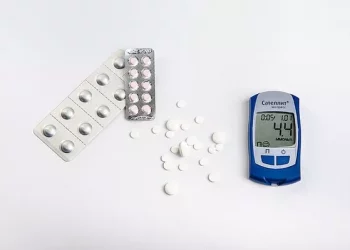Fully closed-loop automated insulin delivery (AID) systems are emerging as a promising solution for people with diabetes, offering significant ease in glucose management. These systems are designed to function autonomously, without the need for meal announcements, while still maintaining precise blood sugar control. New findings from the ATTD 2025 conference, focusing on cutting-edge diabetes technology, highlight the potential of these systems.
One pivotal study showcased the capabilities of an open-source AID system that operates on Android smartphones, with participants achieving an impressive 66% time in range despite not making any meal announcements. The AndroidAPS system utilizes continuous glucose monitoring (CGM) data to adjust insulin doses automatically, responding to fluctuations in blood sugar levels.
Neale Cohen, a professor at the Baker Heart and Diabetes Institute in New Zealand, shared results from the CLOSE IT study, which involved 75 participants with type 1 diabetes over a three-month period. Cohen emphasized that a reliable, fully closed-loop system could revolutionize the management of type 1 diabetes, bringing it closer to reality. The study compared two groups: one that used meal announcements and manual insulin bolusing, and another that operated the system entirely in closed-loop mode. While both groups had similar A1C levels (averaging between 6.8-6.9%), the fully closed-loop group achieved a 66% time in range, slightly lower than the 69% achieved by the hybrid group.
Cohen pointed out that no significant differences in time spent below range were observed, and emphasized the importance of refining the system’s algorithm. For instance, the team made adjustments to the system to address elevated blood sugar after larger meals, particularly in the evening. By fine-tuning the insulin sensitivity factors, the system proved more effective in maintaining glucose control during dinner hours.
While the user satisfaction analysis is still ongoing, Cohen noted generally positive reactions and encouraging metrics from participants.
In a separate study, Dr. Laya Ekhlaspour, a pediatric endocrinologist at the University of California, San Francisco, presented findings from the FCL@Home study. This research explored a fully closed-loop AID system powered by artificial intelligence, specifically neural network technology modeled after the human brain. Participants using this advanced system experienced a 62% time in range, compared to 49% in the hybrid group. Those using the fully closed-loop system also showed lower time spent above range, averaging 37% compared to 50%.
Ekhlaspour highlighted the potential of AI-driven insulin delivery systems in reducing user input and enhancing glycemic outcomes. She expressed excitement about introducing such systems to pediatric patients who could benefit from this innovation.
The bottom line is clear: Fully closed-loop AID systems can offer comparable blood sugar regulation to hybrid systems, without requiring users to announce their meals. However, researchers recognize that further improvements are necessary, particularly to reduce mealtime blood sugar spikes during larger evening meals. The integration of advanced AI technologies like neural networks holds great promise for more effective diabetes management, and as research progresses, these systems could become a game-changer for people with diabetes, offering them greater autonomy and improved control over their blood sugar levels.
The results are encouraging, and while more work is needed to perfect these systems, the future of automated insulin delivery looks increasingly promising.
Related topics:
Early Type 1 Diabetes Detection Could Alleviate ‘Invisible Burden,’ Advocates Say
Diabetes Alert Day Highlights Awareness Gap as 80% of People Unaware of Prediabetes Risks
Rabson-Mendenhall Syndrome Nearly Misdiagnosed as Type 1 Diabetes Mellitus: A Case Report























